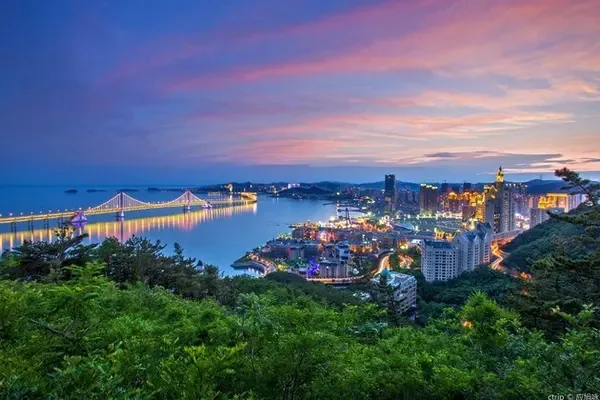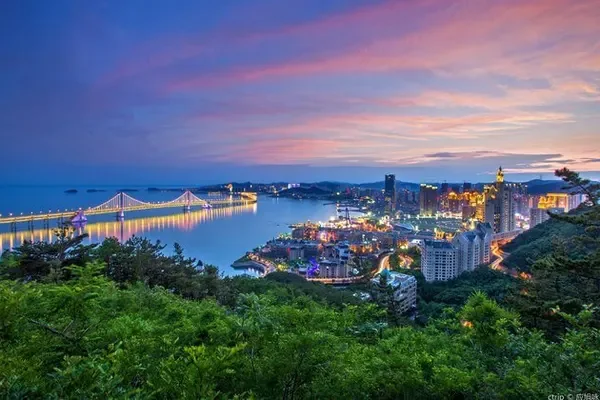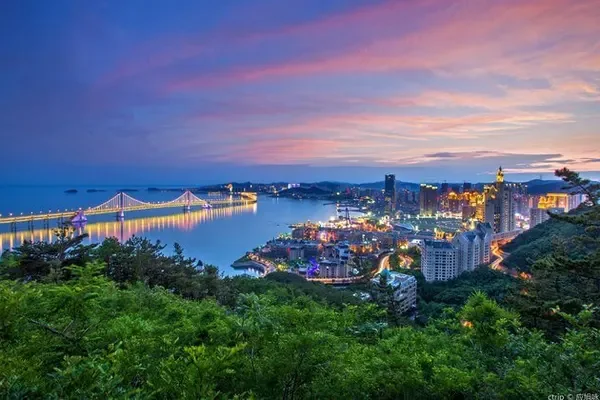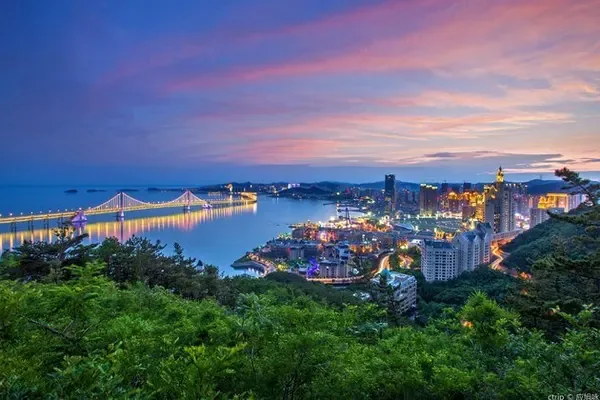preamble
The trip to the northwest, a long-planned self-driving trip, originated from the fascination with the Hexi Corridor and the Mogao Grottoes, as well as the yearning for the legendary G315.
In July 2021, with the cooperation of time and the agreement of the travel companions, the trip will begin. Some people say: "It is better to travel thousands of miles than to read thousands of books". I said, ten thousand volumes of books can be read slowly, but ten thousand miles of road can be walked as soon as you say!
Because of LAOWANG's obsession, we decided to go 500 kilometers north to see the Ulan Hada Volcanic Group, which is the cover of National Geographic magazine; then, through Hetao of Inner Mongolia and the Ningxia Plain, we entered the Qinggan Great Ring Road from Wuwei and Zhangye; After leaving Dunhuang, follow G215 to Mangya City, Qinghai; after that, formally enter G315, cross the uninhabited Qaidam Basin; climb over the 3,600-meter-high rubber mountain, and arrive at Qinghai Lake and Xining; then return to Beijing from Xining via Lanzhou .


Let's enjoy this 8000 km journey to the fullest!
DAY 1 Beijing -> Ulan Hada Volcanic Group -> Hohhot
sunny, better travel
Departure at six o'clock in the morning and head north along the Beijing-Tibet Expressway. With the little excitement of leaving the reinforced concrete jungle, 5 hours (420 kilometers) seemed to pass by in the blink of an eye. Arrived at the destination around 11:00 noon.
Ulan Hada Volcanic Group, located in Chahar Youyihou Banner, Ulanqab City, Inner Mongolia Autonomous Region, is the closest volcano to Beijing and a rare grassland volcano. It is said that the last eruption of the volcano was about 10,000 years ago. This is the only area found on the southern edge of the Mongolian Plateau that experienced volcanic eruptions during the Holocene (Holocene). In this area with a radius of more than 60 kilometers, several large and small volcanoes are visible to the naked eye, and they are marked as No. 3, 4, 5, 6, 7, 8.... Now, the roads connecting the various volcanoes are well built, so it is very convenient to drive to see each volcano.







We first went to Volcano No. 4. At the foot of the mountain is the visitor center and parking lot. This volcano is black, so it is also called "black brain bag". Climbing to the top of a volcano is like stepping onto a desolate planet on Star Trek. Overlooking from a distance, the surrounding volcanoes are patchwork and echo each other. Looking closely, the children are wearing white spacesuits and taking pictures, with great interest and enthusiasm.





From No. 4 volcano, not far north along the road is No. 3 volcano (called "North Alchemy Furnace"). On the road, I met a group of cute baa baa blocking the front of the car, walking leisurely...


Volcano No. 3 has trails, which are convenient for tourists to climb up the stairs. Although I was exhausted and out of breath, I finally climbed to the top of the mountain. At the moment of climbing to the top, a huge volcanic crater suddenly appeared, which made people dumbfounded. Tourists walked towards the bottom of the pit in twos and threes, and the figures in sight gradually became smaller. When they reached the round volcanic eruption, the figures in their sight were already blurred. Around the ring pit, the sloping gravel road is not easy to walk. From time to time, there are signs of collapse under the feet, and the edge of the volcano is so thin that it seems to collapse at the touch of a finger, which makes people frightened (seeing children running happily on it, I am still a little worried, it is best to install guardrails!).
Looking up from a distance, the quiet prairie is like a picture scroll in front of you. In the change of light, sky, cloud and shadow, volcanic buns, straw mats, lone trees, flocks of sheep... are far or near, bright and dark. The long green leather trains lined up on the green grass like matches, slowly entered our sight, and then quietly went away in the white clouds and breeze.










Leaving Volcano No. 3, go back along the original road, and after passing Volcano No. 4, you will arrive at Volcano No. 5 (called the "Alchemy Furnace"). The exterior of this volcano is the best preserved. The snow-white clouds seem to hang on the beautifully curved volcanic beams, and they are very beautiful no matter how far or near they are viewed. However, there is no trail on the mountain, so you can only climb up the gravel road that "more people are walking", and it is quite difficult to climb up. He looked up at the mountain in front of him, hesitated for a while, and gave up his attempt to climb up. So, let Laowang go to climb by himself, and walk at the foot of the mountain with Lilia, and you can also enjoy the wind and the scenery (look at the photos we took at the foot of the mountain, it’s not bad!)











In this way, walking along the smooth road between the volcanoes. At a turn, a huge green or black monster suddenly came into view, and it was unprepared, shocking. It is this group of silent behemoths that allow us today to appreciate the miracles of nature thousands of years ago.
Satisfied, I left the volcanic group, continued along the Qinghai-Tibet Expressway, and arrived at today's destination: Hohhot-Qingcheng, a refreshing and pleasant city.
P.S.: When I arrived in Hohhot, I suddenly found that most of the eczema that has been lingering since the Dragon Boat Festival and has been cured for a long time has been cured. This is the BONUS of this trip, right? !
DAY 2 Hohhot -> Yinchuan
Today's main task: hurry up.
Starting from Hohhot, you have to pass Baotou and Urad Front Banner all the way... On the right hand side, you can see the mountains up close; on the left hand side, you can see the Yellow River in the distance. On the Hetao Plain in Inner Mongolia, the Beijing-Tibet Expressway extends almost all the way along the "Ji" bend of the Yellow River. Suddenly, I saw the bend of the Yellow River's "Ji" from a distance. At this time, the Yellow River is no longer a blunt line on the map for us, but a vivid reality.
"The Yellow River in the world is the only rich one", the top of the "Ji" bend of the Yellow River is Bayannaoer City. In order to have a closer contact with the water of the Yellow River, we got off the expressway from Bayannur Linhe Station, took Jinchuan Avenue, and came to the Yellow River Wetland Park. Then follow the X725 along the Yellow Highway, stop and go all the way. Lush and fertile fields, endless sea of sunflowers and large red willow forests on the Yellow River wetland pass by one by one.
Parking on the shore, watching flocks of unknown waterfowls leisurely rising and falling, watching the golden waves of the Yellow River calm down, it's so pleasant!
The local government has already started to build trails along the coast, so it will no longer be possible to drive cars directly to the banks of the Yellow River in the future.


DAY 3 Yinchuan -> Wuwei
Today, I will finally enter the Hexi Corridor!
The original plan was to go south from Yinchuan, through Wuzhong, Zhongwei, and Jingtai counties in Ningxia to the famous Wushaoling (the starting point of the Hexi Corridor), and then go to Menyuan County to see Baili rapeseed flowers (and thus enter the Qinggan University loop). After careful investigation, I found that the road was too long, so I had to give up, reluctantly! Finally, we decided to start from Yinchuan, take the Beijing-Tibet Expressway-Fuyin Expressway to Zhongwei, and then take the Wuding Expressway-Lianhuo Expressway to Wuwei City.
Leaving Yinchuan early in the morning, heading south along the expressway, passing through Wuzhong City and Qingtongxia, and arrived in Zhongwei after more than two hours.
Zhongwei City is located in the transition zone from the Ningxia Plain to the Loess Plateau. The topography and landforms here are very rich: the Yellow River crosses from west to east, forming the impact plain of the Yellow River; and between the south bank of the Yellow River and the mountains, there are large areas of platforms and loess hills; in the northwest, on the edge of the Tengger Desert Shapotou - bordering on the desert in the north and the Yellow River in the south, it forms a scenic spot integrating the desert, the Yellow River, mountains and oases. It is said that Wang Wei, a great poet of the Tang Dynasty, wrote the famous line of "the desert is solitary, the long river falls into the sun" in the desert of Shapotou. However, the purpose of our coming here is not to go sandboarding in Shapotou...
Navigation: North Long Beach Village. We got off the expressway from Zhongwei, bypassed the tourist center of Shapotou Scenic Area, and then we started winding along the banks of the Yellow River. Tall and straight poplar trees stand on both sides of the canal, and the Yellow River flows quietly in the canal. On the hillside in the distance, the sea of Gesang flowers shines pink under the blue sky and white clouds. Standing on a hill and looking down, against the backdrop of the winding Yellow River, an oasis looks extraordinarily fresh and bright.


As the water of the Yellow River enters the mountains all the way, the scenery on both sides has changed from plain oasis to desert hills. Suddenly, a big road sign "Turn to Route 66" appeared in front of us, so we turned left and moved forward—the Internet celebrity "Route 66" was in front of us—the destination of our trip. In fact, this is just an ordinary mountain road in Zhongwei Mountain. Those who have nothing to do come here for a visit and find that it is somewhat similar to Route 66 in the United States, so it is jokingly called Route 66 in China. The local government enjoys its name, accepts it with a smile, and simply puts up a signboard as a proof, so a way for online celebrities to punch cards was born. It is said that during the "May 1st" period, this road was full of cars!




Following this road sign that cannot be missed, we embarked on this two-lane mountain road. As the terrain rises, there are no green trees and grass, only brown Haloxylon grass, dotted here and there on the green-brown/purple-red hills. Looking at it from a distance, it has a bit of the "cracked" taste in traditional Chinese painting. At this moment, it seems that we are the only car driving on the empty and uninhabited mountain road, which makes us wonder if we are going the wrong way? But in fact, it only takes one turn, and a "U"-shaped mountain road appears in front of you, rolling up and down in the hills, until it goes deep into the white clouds. Large and small vehicles were parked in a line on the side of the road, and there were men and women of all colors standing in the middle of the road and posing!
This is the legendary Route 66. Fortunately, there are not too many people today, good luck, let's join the check-in team!














After finishing the shape, he climbed up the mountain bag on the side of the road. Above the head, white clouds are like a cover, as if they are within reach. The breeze floats, the white clouds roll, and the light and shadow change, and the bare hills and hills also have spirituality, adding a bit of beauty. Against the background of the big white clouds, we feel good standing on the mountain!



To be honest, the scenery of this Internet celebrity road is beyond our imagination. Therefore, it took a long time to play here, and it was three o'clock in a blink of an eye. Returning to the expressway and headed towards Wuwei, what is on my mind is, is there still time to go to the Tiantishan Grottoes? Hurrying all the way, it was almost six o'clock when we passed the Babu Sarin Factory. It seems that the plan to go to Tianti Mountain has to be cancelled!
By the way, Babu Sarin Plant. It is here that three generations of foresters headed by the "six old men" have afforested 380,000 mu in the past 38 years, creating another apotheosis of sand control and afforestation. No matter when and where, this kind of unswerving efforts is always touching. Because green mountains and green waters are not taken for granted.
At seven o'clock in the evening, we finally arrived in Wuwei. Wuwei, a name that appears frequently in various historical books. More than 2,000 years ago, Emperor Wu of the Han Dynasty sent Huo Qubing to lead an army to attack the Xiongnu in the north and regained the Hexi Corridor. Afterwards, four Hexi towns were established here, and Wuwei was one of them, which means to show the "martial arts and military might" of the Han Empire. Historically, Wuwei was also called Liangzhou and Guzang.
Our Hexi Corridor journey starts here...
(to be continued)



